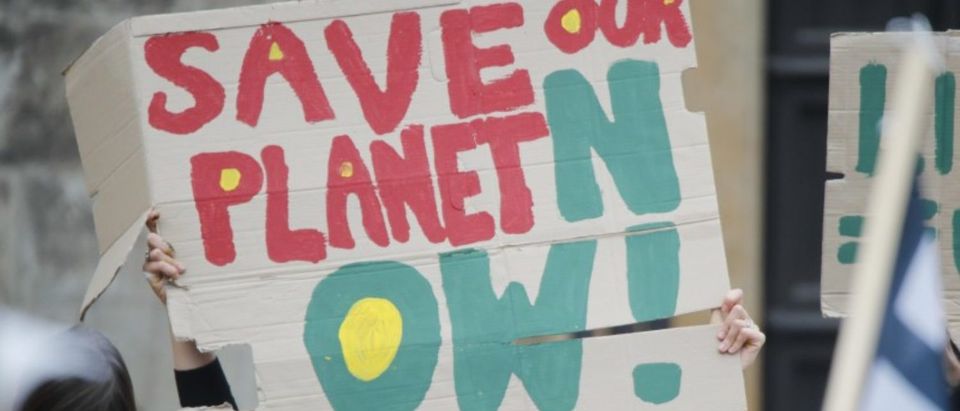Scientists put out a new study claiming the worst global warming predictions could be 15 percent worse than models suggest, but that’s based on a scenario experts say is increasingly unlikely to happen.
Patrick Brown and Ken Caldeira of the Carnegie Institution for Science say incorporating observational data of “Earth’s top-of-atmosphere energy budget” shows the “warming projection for the end of the twenty-first century for the steepest radiative forcing scenario is about 15 per cent warmer (+0.5 degrees Celsius) … relative to the raw model projections reported by the Intergovernmental Panel on Climate Change.”
“Our results suggest that achieving any given global temperature stabilization target will require steeper greenhouse gas emissions reductions than previously calculated,” Brown and Caldeira wrote in the study.
Brown and Caldeira are referring to the RCP 8.5, or “business as usual” as it’s often called, scenario the IPCC models in its reports. It’s the IPCC’s worst global warming scenario, where warming reaches more than 8 degrees Fahrenheit by the end of the century.
RCP 8.5 is basically the IPCC’s “nightmare” scenario. It’s also a scenario experts say is increasingly unlikely.
Two University of British Columbia scientists recently published a study calling into question scientists’ use of the RCP 8.5 scenario.
Scientists Justin Ritchie Hadi Dowlatabadi found that RCP 8.5 modeled a future where historical trends reverse, and the world switches to using more coal. This “indicates RCP8.5 and other ‘business-as-usual scenarios’ consistent with high CO2 forcing from vast future coal combustion are exceptionally unlikely,” they found.
Most energy experts see coal making up a shrinking proportion of global energy production in the coming decades. Though still predicted to play a major role in keeping the lights on, mainly from growth in Asia, natural gas and renewables eat into its market share in the coming decades.
However, scientists skeptical of catastrophic warming have been pointing this out for years. Former Cato Institute climate scientist Chip Knappenberger often pointed out that RCP 8.5 is not “business as usual.”
Labeling the worst modeled scenario as “business as usual” only served to make national pledges to comply with the Paris accord seem more ambitious than they actually were.
So, how did Brown and Caldeira conclude global warming could be worse than a scenario that’s unlikely?
Meteorologist Anthony Watts noted the study used “the CERES data to create a greater feedback in the model, and thus increase the worst-case scenario by 15%.” In other words, they “amplified” the model projection and “the choice of words is all about making you think they are being conservative with the numbers.”
Brown and Caldeira find a climate sensitivity of 3.7 °C, which is significantly higher than what most scientists use. It’s also at the high end of what the IPCC considers the likely range of climate sensitivity, and most independent studies put it between 2 and 3 degrees Celsius.
“Clearly, climate science doesn’t know exactly what the response of the atmosphere is to a doubling of CO2, but we have a range of opinions published in the literature,” Watts wrote on his blog Watts up With That.
Follow Michael on Facebook and Twitter
All content created by the Daily Caller News Foundation, an independent and nonpartisan newswire service, is available without charge to any legitimate news publisher that can provide a large audience. All republished articles must include our logo, our reporter’s byline and their DCNF affiliation. For any questions about our guidelines or partnering with us, please contact licensing@dailycallernewsfoundation.org.


